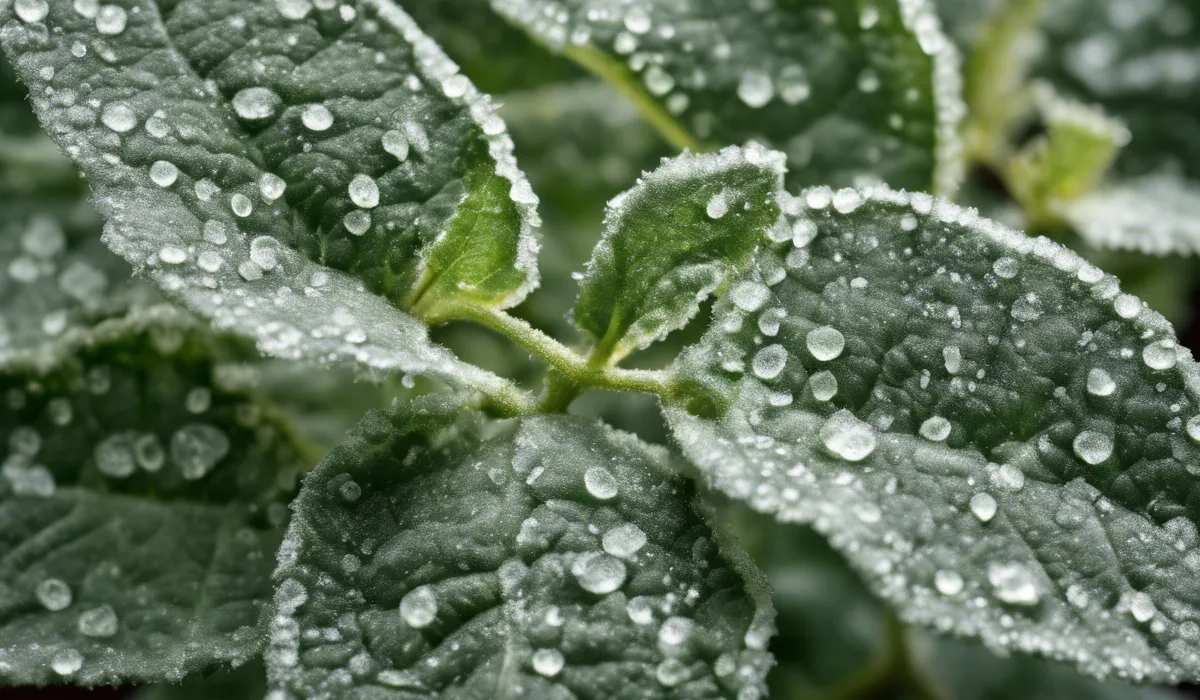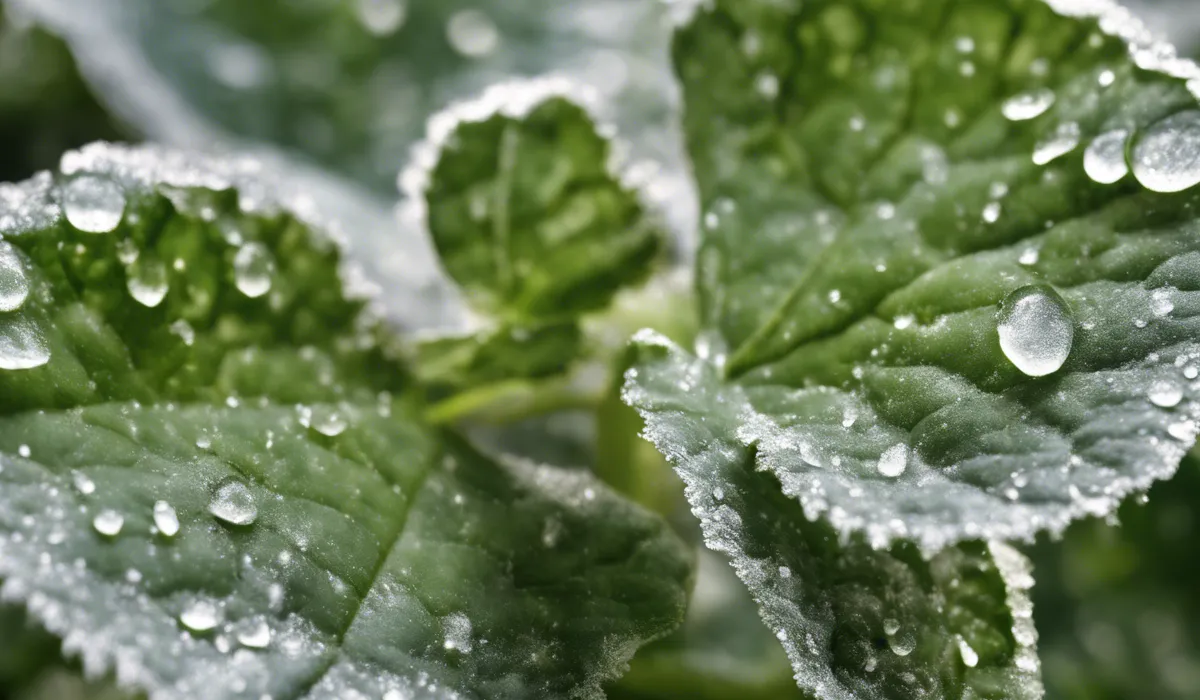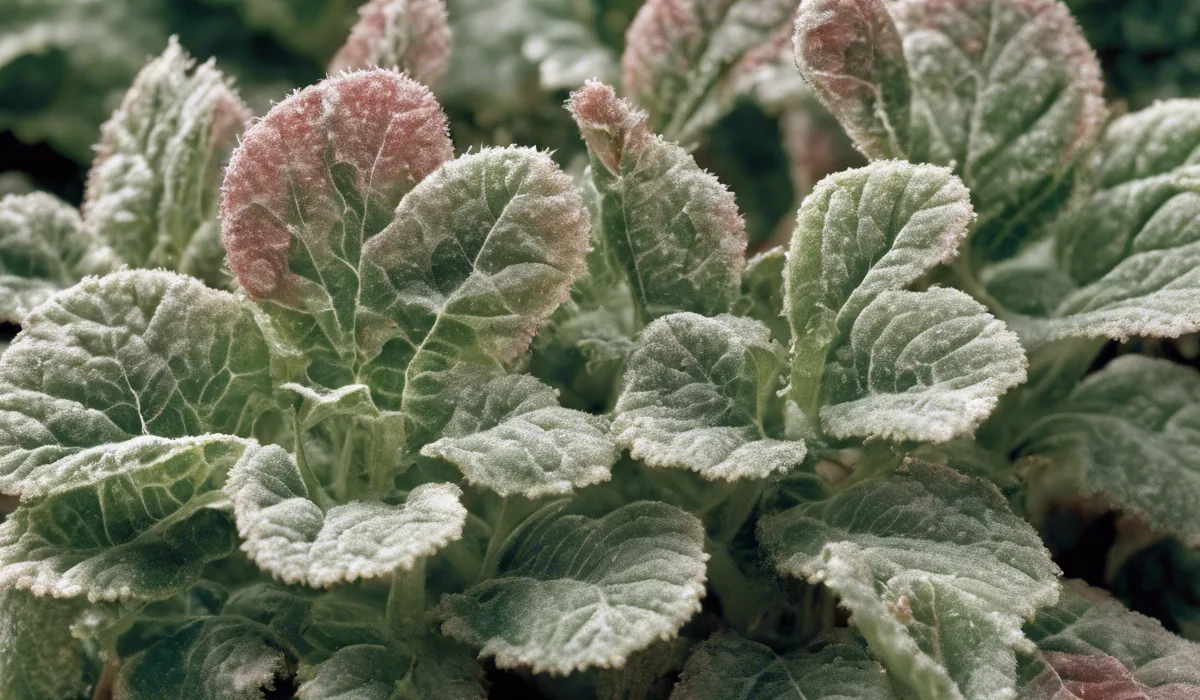Powdery mildew appears as white or gray powdery spots on leaves and stems. It often starts in small patches that can spread and cover large areas. The affected foliage may yellow and drop prematurely.
Identification of Powdery Mildew

Description of the Fungal Disease
Powdery mildew is a common fungal disease that affects a wide array of plants. This disease is caused by various species of fungi, each preferring specific plant hosts.
The fungi thrive in warm, dry climates with high humidity levels, especially when night-time temperatures are cooler.
Powdery mildew can quickly become a problem in gardens and greenhouses if left unchecked.
Typical Appearance on Leaves
One of the first signs of powdery mildew is the appearance of white or gray powdery spots on leaves. These spots can start out very small, often going unnoticed in the early stages.
As the disease progresses, the spots can grow and eventually merge, forming a more extensive coating that resembles a dusting of flour on the plant’s surfaces.
Color Variations and Patterns
While the most common color of powdery mildew is white or gray, it can sometimes exhibit slight color variations depending on the specific fungus and plant involved.
The spots can also exhibit patterns, such as rings or blotches, which can help in identifying the disease. These patterns may change as the disease matures and spreads.
Presence on Stems and Flowers
Beyond leaves, powdery mildew can also affect the stems and flowers of a plant. On stems, the fungus may appear as elongated streaks, while on flowers, it can cause a general coating or localized patches.
The presence of the fungus on flowers can lead to poor flower development and can reduce the overall aesthetic and health of the plant.
Effects and Damage Caused by Powdery Mildew

Impact on Photosynthesis
Powdery mildew obstructs the plant’s ability to conduct photosynthesis effectively. The fungal growth blocks sunlight from reaching the leaf surface, which is crucial for photosynthesis.
Over time, this can lead to a reduction in the energy the plant can produce, weakening the plant and making it more susceptible to other stresses.
Disfigurement of Plant Parts
The aesthetic appeal of plants is often greatly diminished by the presence of powdery mildew. Leaves may become twisted or distorted, and the white fungal coating can be unsightly.
This disfigurement is not just a cosmetic issue; it can also signal underlying health problems for the plant.
Potential for Stunted Growth and Reduced Yields
Powdery mildew can cause plants to grow more slowly than they should. In agricultural or garden settings, this can translate into reduced yields of fruits, vegetables, or flowers.
The energy that the plant would normally put into growth and reproduction is instead used to cope with the stress of the infection.
Long-term Health Issues for the Affected Plants
If powdery mildew is not controlled, it can lead to serious long-term health issues for plants.
Continuous infection can weaken a plant’s immune system, making it more vulnerable to other diseases and pests. In some cases, a severe infection can even be fatal to the plant.
Differentiating Powdery Mildew from Similar Plant Issues

Comparison with Other Fungal Diseases Like Downy Mildew
While powdery mildew and downy mildew might sound similar, their appearances are quite distinct.
Downy mildew typically appears as yellow to brown lesions on the upper surfaces of leaves and a fluffy, grayish growth on the undersides.
Knowing these differences can help gardeners accurately diagnose and treat their plants.
Distinctive Signs Separating It from Nutrient Deficiencies
Nutrient deficiencies can cause discoloration and poor growth in plants, but they do not produce the powdery spots characteristic of mildew infections.
For instance, a nitrogen deficiency might yellow a plant’s leaves, but it won’t create a powdery surface coating. Observing these subtleties can prevent misdiagnosis and ensure proper care.
How to Tell It Apart from Environmental Damage?
Environmental damage like sunburn can cause leaves to appear bleached or discolored, which may be confused with fungal diseases.
However, sunburn will not have the powdery texture of mildew. Similarly, pesticide residue can leave a film on leaves, but it typically washes away with water, unlike the persistent fungal spores of powdery mildew.
FAQs About Powdery Mildew Appearance
What initial signs indicate powdery mildew on plants?
Powdery mildew initially appears as small, white or gray powdery spots on the leaves and stems of plants.
How does powdery mildew spread on a plant?
Powdery mildew spreads from small patches, potentially growing to cover large areas of the plant if not treated.
What does powdery mildew look like when it becomes severe?
In severe cases, powdery mildew can form a widespread coating, making the foliage look as though it has been dusted with flour.
Can powdery mildew cause leaves to change color?
Yes, leaves affected by powdery mildew may turn yellow and can drop from the plant prematurely.
Are both leaves and stems susceptible to powdery mildew?
Yes, powdery mildew can affect both the leaves and stems of a plant.
Final Thoughts
Powdery mildew is recognizable by its distinctive white or gray spots that resemble a powdery substance on the leaves and stems of plants.
It typically begins in small, localized areas and can expand rapidly, potentially enveloping extensive sections of the plant.
As it progresses, it can lead to the yellowing of foliage and premature leaf drop, indicating a severe infestation.
